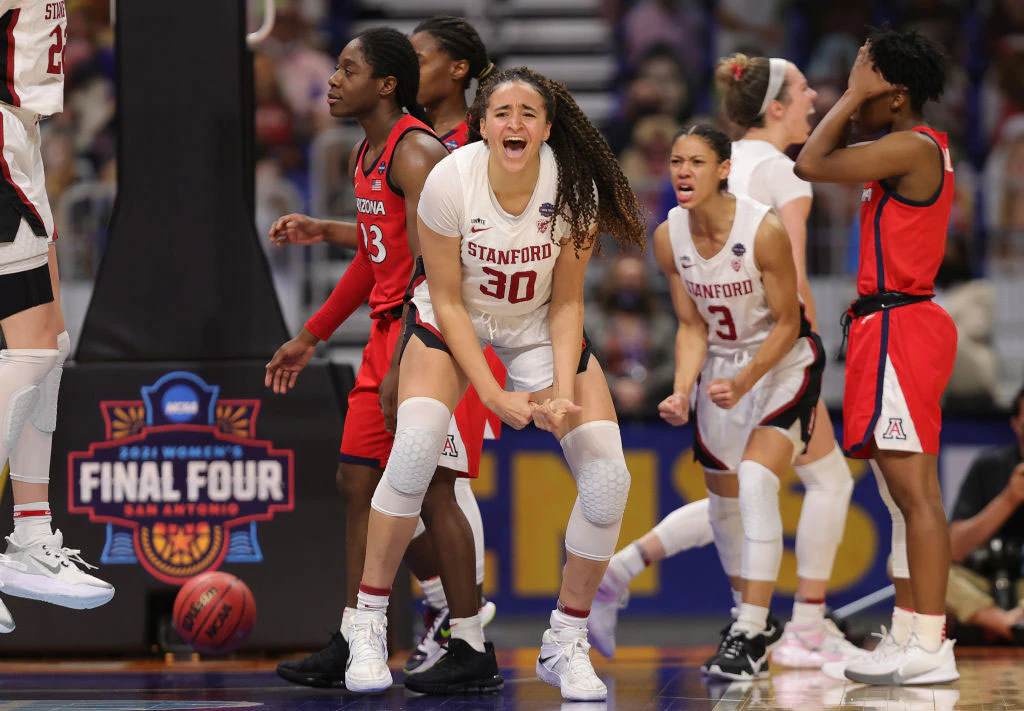The WNBA is a once-in-a-lifetime opportunity for any ambitious athlete. However, with only 12 teams and a limited number of roster spots, it can be difficult for eligible players to make the transition from high school basketball to the professional level.
This concern has garnered more attention this year than ever before, as many high-profile draft picks and some experienced players were cut from WNBA rosters. That’s why student-athletes need to explore all of their options and consider opportunities outside of the WNBA.
So, how can student athletes maximize their chances to join this elite group? Here’s what you need to know:
NCAA Women’s Basketball
There are currently 351 NCAA Division I women’s basketball programs, meaning there are abundant opportunities to play at a high level of college basketball. This is a great route for any ambitious athlete looking to hone their skills and increase the likelihood they will reach the professional level. NCAA athletes are more likely to come to the attention of WNBA scouts and drafted into the league.
The NCAA also hosts an annual women’s tournament. The “March Madness” tournament is a 64-team bracket where the best players compete for the National Championship. This is one of the most-watched sporting events every year.
WNBA Draft Eligibility
The WNBA draft is an annual event where college basketball players are selected by WNBA teams. The draft is three rounds long and only open to athletes who have either completed their college eligibility or relinquished any future eligibility. There are three ways to be eligible for the draft.
First, domestic players must be a minimum of 22 years old the year of the draft. A player who is not yet 22 can declare, but only if they are within three months of graduation (from a four-year college) by the time of the WNBA draft. International entrants must be at least 20. Domestic entrants who turn 22 the year of the draft can submit their intent to participate regardless of collegiate status, provided they relinquish their eligibility.
The second category of eligibility for the WNBA draft are players who have graduated or anticipate graduating within three months of the draft and who meet the minimum age requirements above. The third and final means of eligibility is to have attended a qualifying institution; provided verification that the player’s original class is or will be graduating within three months of the draft; and met the minimum age requirements above.
Additionally, players must submit a written declaration to the league office. Once the player’s eligibility has been verified, they will be added to the “draft pool.” From there, it’s up to the teams to decide who they want to select. The draft itself features three rounds. Each round consists of 12 picks; thus, just 36 athletes out of the pool will be selected. In 2022, 108 athletes declared for the WNBA draft, meaning only a third of them could be drafted.
The Impact of Roster Constraints
Each WNBA team is allowed to have a maximum of 12 players on its roster. This includes both active and inactive players. Inactive players are those who are not currently playing with the team, but who are still under contract. This year, extra attention has been paid to last-minute roster cuts in the lead-up to the season.
Roster cuts are inevitable in the world of professional sports. They happen for a variety of reasons, most often due to injuries or lack of production. When it comes to the WNBA, roster cuts can have a significant impact on a player’s career because there are so few teams and roster spots available.
In 2022, roster moves have brought some serious topics to the table once again. Players and coaches are calling for changes to the salary cap and league expansion to address devastating cuts. Another change many athletes are advocating for is the creation of a G-League, similar to the one in the NBA, where young players can continue to develop their skills and eventually make a WNBA roster.
Future Prospects in the WNBA
Still, the future looks bright for women’s basketball. The sport has come a long way in recent years and continues to grow in popularity. The US women’s national basketball team took gold in the 2020 Olympics in Tokyo in 2021, and two of the biggest names in women’s basketball—Diana Taurasi and Sue Bird—are moving ever closer to retirement.
In recent years, the WNBA has seen considerable of growth, due in large part to the league’s efforts to expand its reach. The strategy seems to have been successful; in 2021, the WNBA saw its highest TV ratings to date.
The WNBA commissioner recently announced interest in expanding the league once again, this time from its current dozen teams. While players are hopeful for changes like a softer salary cap and new teams, it waits to be seen if anything will happen before the next Collective Bargaining Agreement in 2027.
What Other Professional Opportunities Are Available?
The WNBA is the dream for many ambitious athletes. However, with only 12 teams and a limited number of roster spots, it can be difficult to make the transition from college basketball to the professional level.
One option for competitive athletes who don’t make it to the WNBA draft is to play abroad. There are many great leagues overseas that can provide talented players with valuable experience. However, interest in such opportunities has dwindled as WNBA star Brittney Griner remains unlawfully detained in Russia, where she was going to play during the WNBA off-season.
Many popular destinations for professional basketball players include places like Australia and Western Europe. However, playing for big money in Russia or China—where salaries are often highest—carries potential safety risks.
However, plans for WNBA expansion or even a G-League would be great news for any aspiring professional basketball player. With more teams comes more roster spots, which means more opportunities to pursue the dream of playing in the WNBA.

